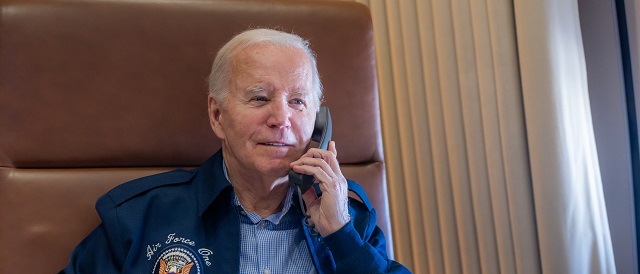Business
Navigating the country’s telecommunications landscape a tricky task: Peter Menzies

From the MacDonald Laurier Institute
By Peter Menzies
On the telecom side of things, the CRTC’s long-standing focus on the fundamental issues of access and affordability is far more tangible than the ethereal cultural ambitions that have swamped the broadcasting boat
Canada’s communications policy playing field is more uncertain today than it has been in decades.
The cause is primarily the Online Streaming Act (Bill C-11), which attempts to “modernize” the Broadcasting Act by defining all internet-based audio and visual content as “broadcasting.” Promoted by a series of heritage ministers as a simple matter of ensuring that streaming companies support Canadian content, the act has alarmed a thriving community of unregulated online creators while causing targeted offshore operators to question how they can continue operating in Canada.
Canadian Radio-television and Telecommunications Commission (CRTC) chair Vicky Eatrides, appointed last January, is clearly feeling pressure to implement Bill C-11 as quickly as possible. Following a series of rushed preliminary processes that made it challenging for many companies in the regulatory “rookie” category to participate, the CRTC’s first public hearing is scheduled for Nov. 20.
It involves 127 intervenors, is scheduled to last three weeks, and Eatrides hopes to have initial decisions made by the end of 2024.
With all her staff’s hands to the pumps on that file, Eatrides has shut down dealing with new licensing matters in the traditional broadcasting fields of television and radio for at least two years. All TV licences up for renewal this year were administratively renewed until 2025 (Bell has filed a court appeal). All of those expiring next year were renewed as is until 2026, and the radio industry was informed the CRTC won’t accept applications in that genre for at least two years, putting it in a regulatory cryo-chamber.
Meanwhile, active broadcasting files have been triaged to the extent that they are backed up, in some cases for years, leaving those involved without the decisions they need. The renewal of the CBC’s licence, for instance, remains incomplete 33 months after the CRTC’s public hearing into the matter.
On the telecommunications side, life is much more steady as she goes. Early in July, the CRTC laid out what it described as a more streamlined and flexible manner for determining wholesale access rates with the goal of fostering competition. But these matters are rarely dealt with swiftly, and incumbent companies affected by this new—and, to many, refreshing—approach have a long track record of being able to drag things out.
Competitor access rates is a matter that has preoccupied the CRTC for a decade; the rates have wavered back and forth since at least 2016, and the lack of regulatory certainty has had a debilitating impact on smaller service providers. The largest of those—TekSavvy—threw in the towel early this summer and put itself up for sale.
The management of so-called mobile virtual network operator rates, particularly relevant in the shadow of Quebecor’s purchase of Freedom Mobile, has moved along efficiently. This is another positive sign involving an area in which the CRTC is attempting to foster competition with increased regulatory certainty. When it comes to the telecom side of things, the regulator’s long-standing focus on the fundamental issues of access and affordability is, while complicated in terms of implementation, far more tangible than the ethereal cultural ambitions that have swamped the broadcasting boat.
Two other matters are worth watching.
The first—the CRTC’s role in overseeing negotiations as foreseen in the Online News Act—may evaporate. Meta has moved out of the business of carrying news in Canada, with disastrous consequences for those in the business of creating it. News Media Canada, the industry’s lobbying arm, is now asking the government to bow to Google’s demands before it does the same.
That could mean significant legislative amendments which could eliminate the CRTC’s role entirely. Seeing as the commission has already delayed decisions on which news organizations would qualify until late 2024, this would be a welcome relief.
The second will be whether the CRTC, when dealing with the likes of Disney and Netflix next month, realizes what’s at stake. The United States-based companies aren’t interested in contributing solely through official funds while all the commission appears to want to talk about is how much they should pay and to which funds.
Neither has threatened, as Meta and Google did with Bill C-18, to disconnect Canada if they don’t get the outcomes they need.
Not yet, anyway.
Peter Menzies is a senior fellow with the Macdonald-Laurier Institute, a former newspaper executive, and past vice-chair of the CRTC.
Automotive
New Analysis Shows Just How Bad Electric Trucks Are For Business

 From the Daily Caller News Foundation
From the Daily Caller News Foundation
By WILL KESSLER
Converting America’s medium- and heavy-duty trucks to electric vehicles (EV) in accordance with goals from the Biden administration would add massive costs to commercial trucking, according to a new analysis released Wednesday.
The cost to switch over to light-duty EVs like a transit van would equate to a 5% increase in costs per year while switching over medium- and heavy-duty trucks would add up to 114% in costs per year to already struggling businesses, according to a report from transportation and logistics company Ryder Systems. The Biden administration, in an effort to facilitate a transition to EVs, finalized new emission standards in March that would require a huge number of heavy-duty vehicles to be electric or zero-emission by 2032 and has created a plan to roll out charging infrastructure across the country.
“There are specific applications where EV adoption makes sense today, but the use cases are still limited,” Karen Jones, executive vice president at Ryder, said in an accompanying press release. “Yet we’re facing regulations aimed at accelerating broader EV adoption when the technology and infrastructure are still developing. Until the gap in TCT for heavier-duty vehicles is narrowed or closed, we cannot expect many companies to make the transition, and, if required to convert in today’s market, we face more supply chain disruptions, transportation cost increases, and additional inflationary pressure.”
Due to the increase in costs for businesses, the potential inflationary impact on the entire economy per year is between 0.5% and 1%, according to the report. Inflation is already elevated, measuring 3.5% year-over-year in March, far from the Federal Reserve’s 2% target.
Increased expense projections differ by state, with class 8 heavy-duty trucks costing 94% more per year in California compared to traditional trucks, due largely to a 501% increase in equipment costs, while cost savings on fuel only amounted to 52%. In Georgia, costs would be 114% higher due to higher equipment costs, labor costs, a smaller payload capacity and more.
The EPA also recently finalized rules mandating that 67% of all light-duty vehicles sold after 2032 be electric or hybrid. Around $1 billion from the Inflation Reduction Act has already been designated to be used by subnational governments in the U.S. to replace some heavy-duty vehicles with EVs, like delivery trucks or school buses.
The Biden administration has also had trouble expanding EV charging infrastructure across the country, despite allotting $7.5 billion for chargers in 2021. Current charging infrastructure frequently has issues operating properly, adding to fears of “range anxiety,” where EV owners worry they will become stranded without a charger.
Business
Economic progress stalling for Canada and other G7 countries

From the Fraser Institute
By Jake Fuss
For decades, Canada and other countries in the G7 have been known as the economic powerhouses of the world. They generally have had the biggest economies and the most prosperous countries. But in recent years, poor government policy across the G7 has contributed to slowing economic growth and near-stagnant living standards.
Simply put, the Group of Seven countries—Canada, France, Germany, Italy, Japan, the United Kingdom and the United States—have become complacent. Rather than build off past economic success by employing small governments that are limited and efficient, these countries have largely pursued policies that increase or maintain high taxes on families and businesses, increase regulation and grow government spending.
Canada is a prime example. As multiple levels of government have turned on the spending taps to expand programs or implement new ones, the size of total government has surged ever higher. Unsurprisingly, Canada’s general government spending as a share of GDP has risen from 39.3 per cent in 2007 to 42.2 per cent in 2022.
At the same time, federal and provincial governments have increased taxes on professionals, businessowners and entrepreneurs to the point where the country’s top combined marginal tax rate is now the fifth-highest among OECD countries. New regulations such as Bill C-69, which instituted a complex and burdensome assessment process for major infrastructure projects and Bill C-48, which prohibits producers from shipping oil or natural gas from British Columbia’s northern coast, have also made it difficult to conduct business.
The results of poor government policy in Canada and other G7 countries have not been pretty.
Productivity, which is typically defined as economic output per hour of work, is a crucial determinant of overall economic growth and living standards in a country. Over the most recent 10-year period of available data (2013 to 2022), productivity growth has been meagre at best. Annual productivity growth equaled 0.9 per cent for the G7 on average over this period, which means the average rate of growth during the two previous decades (1.6 per cent) has essentially been chopped in half. For some countries such as Canada, productivity has grown even slower than the paltry G7 average.
Since productivity has grown at a snail’s pace, citizens are now experiencing stalled improvement in living standards. Gross domestic product (GDP) per person, a common indicator of living standards, grew annually (inflation-adjusted) by an anemic 0.7 per cent in Canada from 2013 to 2022 and only slightly better across the G7 at 1.3 per cent. This should raise alarm bells for policymakers.
A skeptic might suggest this is merely a global phenomenon. But other countries have fared much better. Two European countries, Ireland and Estonia, have seen a far more significant improvement than G7 countries in both productivity and per-person GDP.
From 2013 to 2022, Estonia’s annual productivity has grown more than twice as fast (1.9 per cent) as the G7 countries (0.9 per cent). Productivity in Ireland has grown at a rapid annual pace of 5.9 per cent, more than six times faster than the G7.
A similar story occurs when examining improvements in living standards. Estonians enjoyed average per-person GDP growth of 2.8 per cent from 2013 to 2022—more than double the G7. Meanwhile, Ireland’s per-person GDP has surged by 7.9 per cent annually over the 10-year period. To put this in perspective, living standards for the Irish grew 10 times faster than for Canadians.
But this should come as no surprise. Governments in Ireland and Estonia are smaller than the G7 average and impose lower taxes on individuals and businesses. In 2019, general government spending as a percentage of GDP averaged 44.0 per cent for G7 countries. Spending for governments in both Estonia and Ireland were well below this benchmark.
Moreover, the business tax rate averaged 27.2 per cent for G7 countries in 2023 compared to lower rates in Ireland (12.5 per cent) and Estonia (20.0 per cent). For personal income taxes, Estonia’s top marginal tax rate (20.0 per cent) is significantly below the G7 average of 49.7 per cent. Ireland’s top marginal tax rate is below the G7 average as well.
Economic progress has largely stalled for Canada and other G7 countries. The status quo of government policy is simply untenable.
Author:
-

 John Stossel2 days ago
John Stossel2 days agoThe Swamp Survived: Why Trump Failed to “Drain the Swamp”
-

 Education2 days ago
Education2 days agoSchools shouldn’t sacrifice student performance to vague notions of ‘equity’
-

 COVID-192 days ago
COVID-192 days agoCOVID Is Over — But Did We Learn Anything From It?
-

 Automotive2 days ago
Automotive2 days agoNew Analysis Shows Just How Bad Electric Trucks Are For Business
-

 Environment2 days ago
Environment2 days agoScientific Report Pours Cold Water On Major Talking Point Of Climate Activists
-

 conflict2 days ago
conflict2 days agoAmerica Is Really Bad At Foreign Interventions. Why Does Biden Think Ukraine Will Be Any Different?
-

 Opinion1 day ago
Opinion1 day agoBoy Scouts of America changes name to ‘Scouting America’ to be ‘more inclusive’
-

 International2 days ago
International2 days agoWhy Biden’s Gaza refugee plan is a hard hell no





